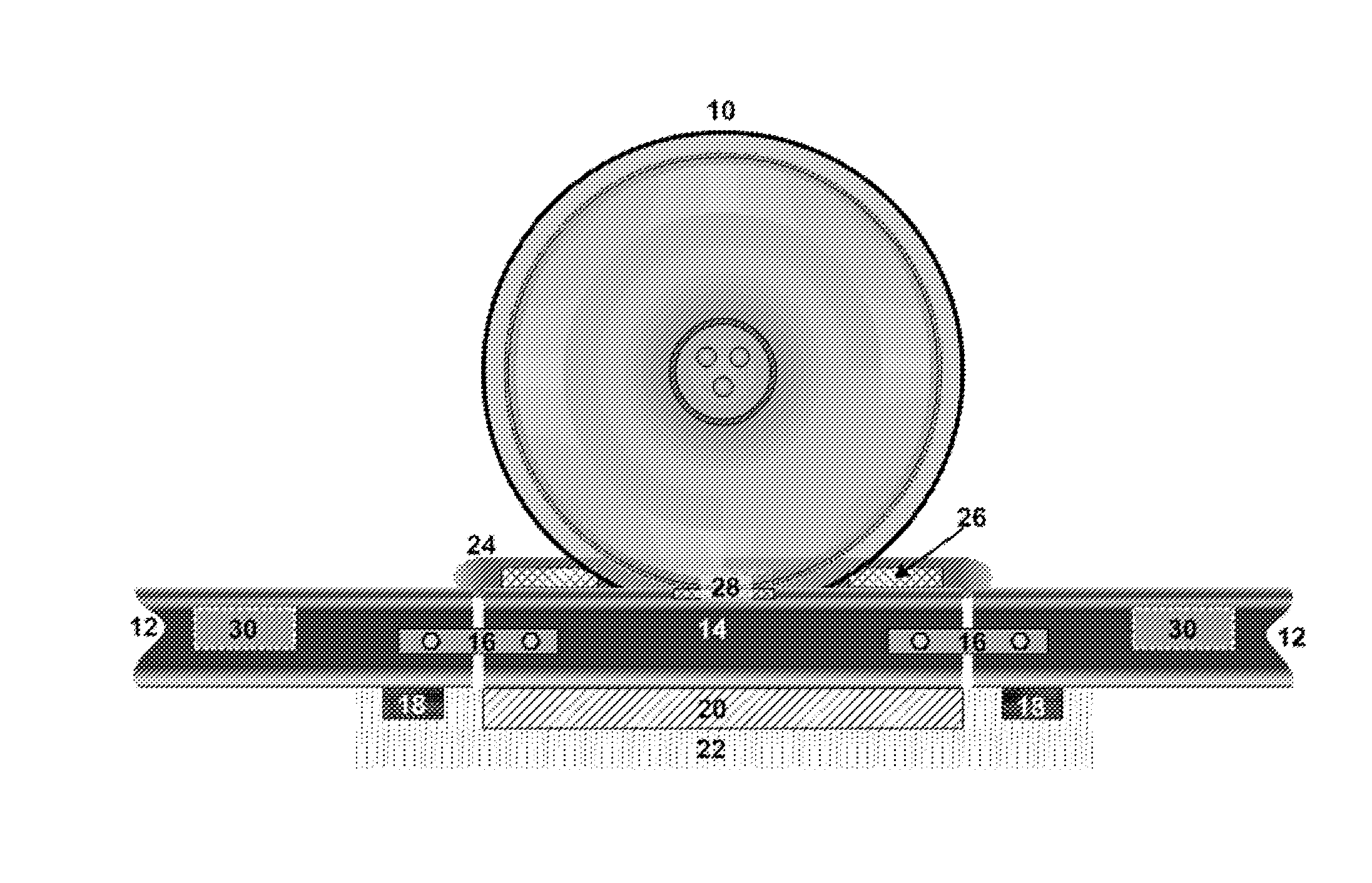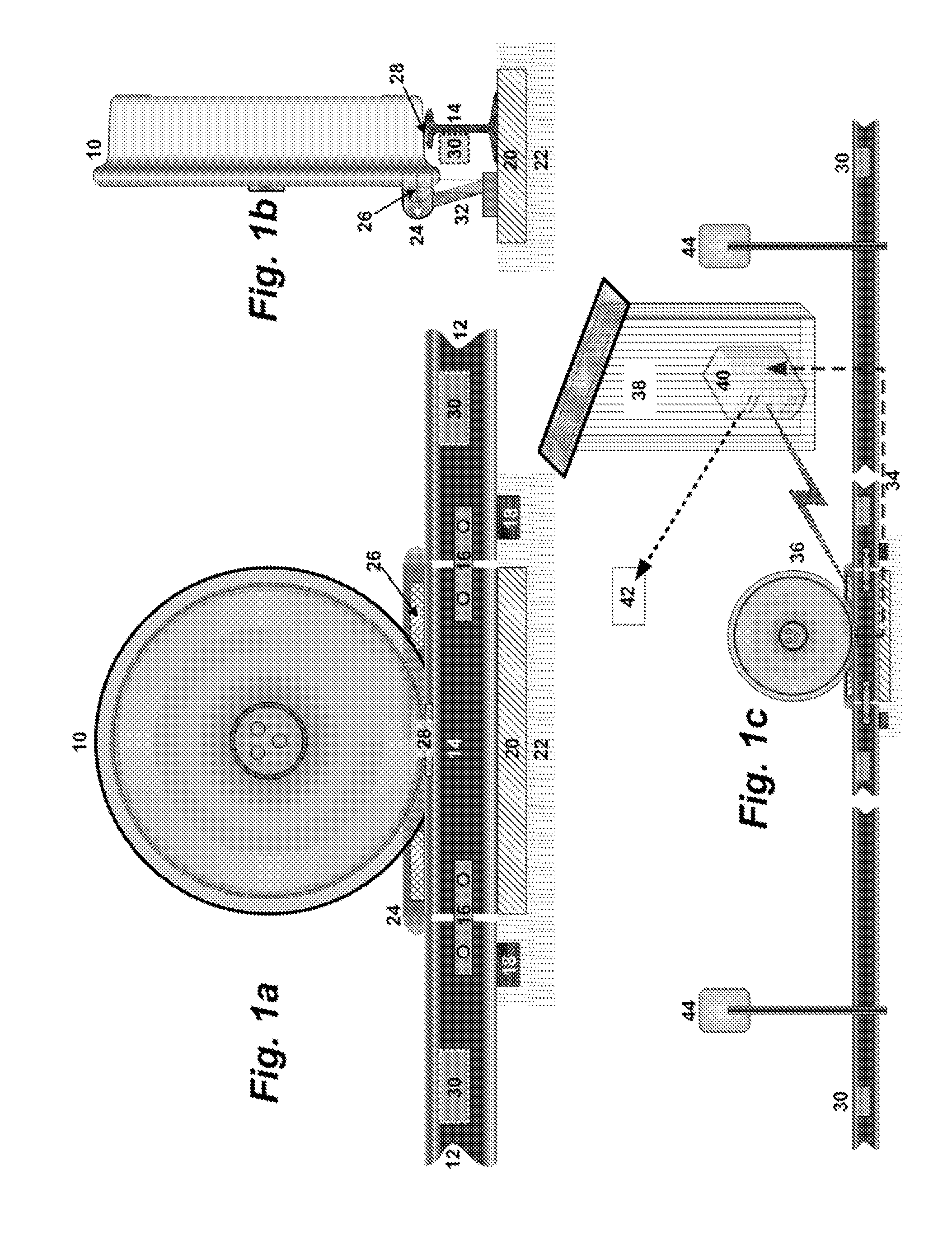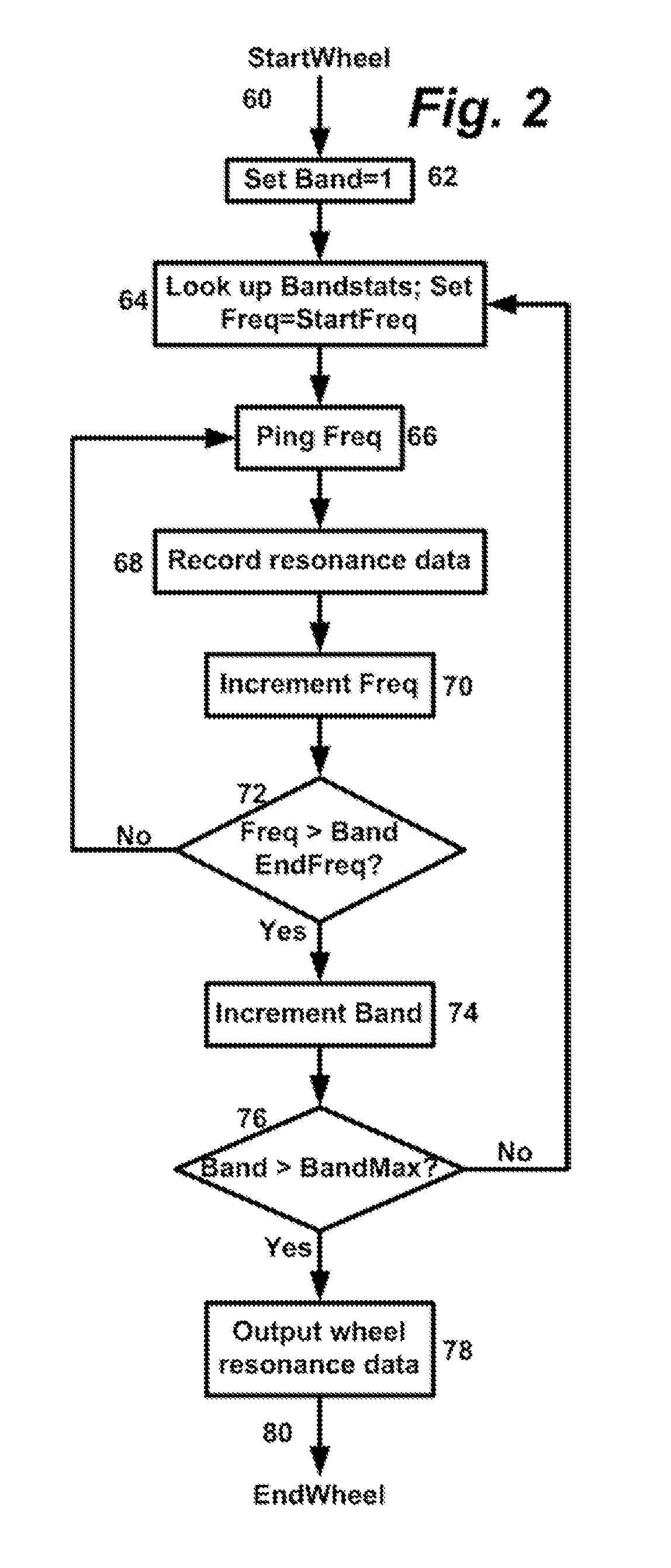Ultrasonic Spectroscopic Analysis-Based Inspection of Rail Components
a technology of ultrasonic spectroscopic analysis and rail components, applied in the field of non-destructive inspection of vehicle components, can solve the problems of flat wear in one location on the wheel, overall change in k and thus in one or more relevant resonant frequencies, and none of these approaches have been used in field settings, so as to eliminate interference of vibrations from other wheels on the rail, easy to notice
- Summary
- Abstract
- Description
- Claims
- Application Information
AI Technical Summary
Benefits of technology
Problems solved by technology
Method used
Image
Examples
Embodiment Construction
[0037]FIGS. 1a-1c depict views of an illustrative device and system according to an embodiment with two variations. As seen in FIG. 1a, railroad wheel 10 is traveling down a set of rails 12, and travels over an isolated rail segment 14. Isolated segment 14 is connected to the remaining rails 12 by connecting devices 16 which prevent the rail segment 14 from moving with respect to rails 12 without strongly coupling the segment 14 and the rails 12. An illustrative connecting device 16 comprises joint bars (sometimes referred to as “fishplates”), which can be made from a glass-reinforced epoxy laminate, such as G-10, or a similar composite having high strength and internal damping. The connecting device 16 isolates rail segment 14 from the vibrations caused by other wheels 10 in front of and behind the current wheel 10. Furthermore, while rails 12 are supported by standard ties 18, the rail segment 14 can be mounted on a vibration absorbing or isolating structure 20, e.g., embedded in ...
PUM
 Login to View More
Login to View More Abstract
Description
Claims
Application Information
 Login to View More
Login to View More - R&D
- Intellectual Property
- Life Sciences
- Materials
- Tech Scout
- Unparalleled Data Quality
- Higher Quality Content
- 60% Fewer Hallucinations
Browse by: Latest US Patents, China's latest patents, Technical Efficacy Thesaurus, Application Domain, Technology Topic, Popular Technical Reports.
© 2025 PatSnap. All rights reserved.Legal|Privacy policy|Modern Slavery Act Transparency Statement|Sitemap|About US| Contact US: help@patsnap.com



